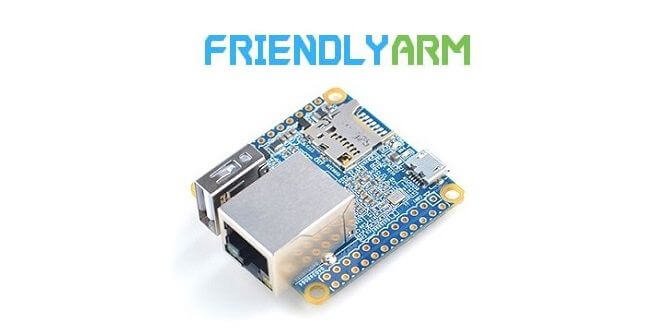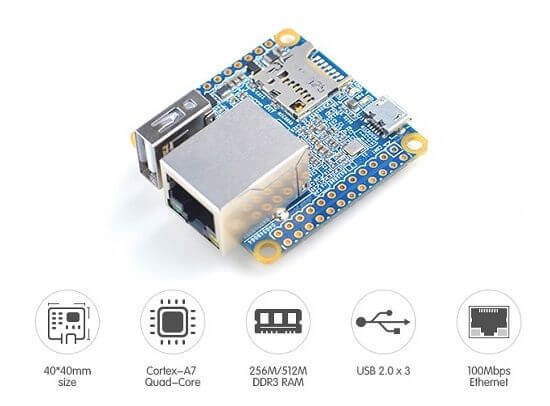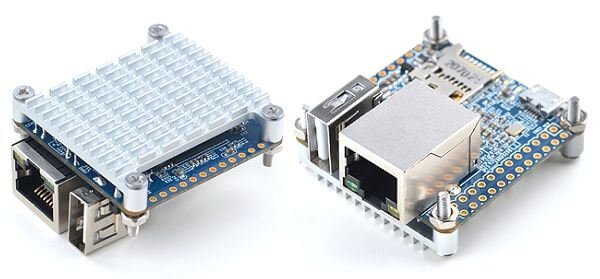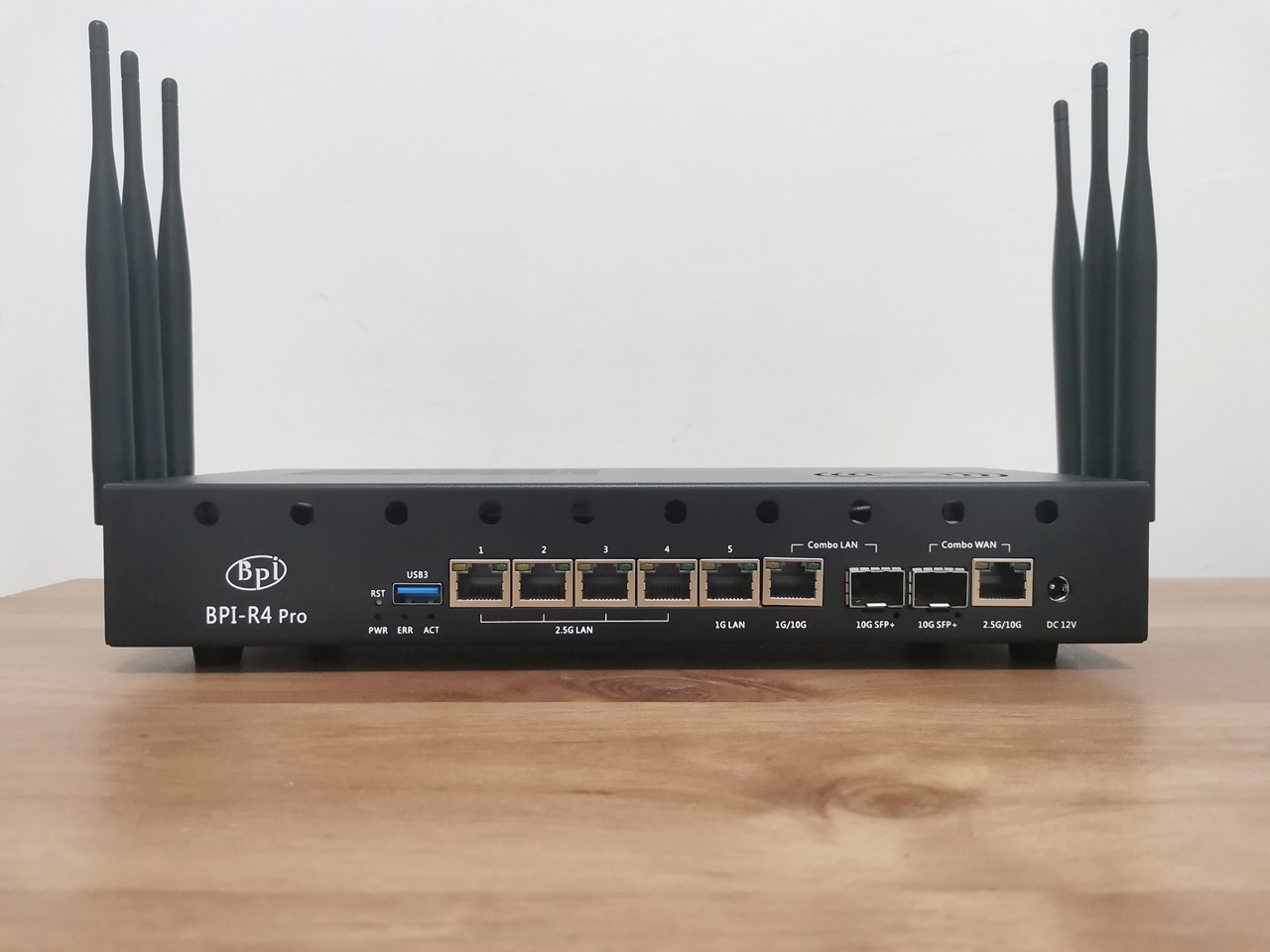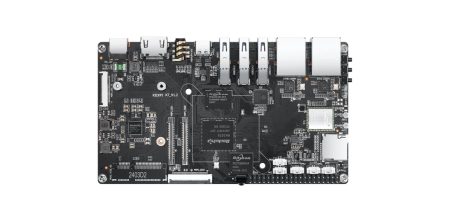NanoPi Neo By FriendlyARM
NanoPi NEO is an ARM development board similar to the Raspberry Pi Zero measuring only 40 x 40 mm made by FriendlyARM, sold for a price tag starting from $7.99. This very small size board is powered with Allwinner H3 Quad-core Processor and comes with one USB Host, 100M Ethernet LAN, Micro SD Card slot, UART interface, and OTG port. It supports few Linux distributions, such as Ubuntu core and in the future also armbian. Because it doesn’t have an on-board HDMI Port, device programming is done trough Serial Port using a debugging board (TTL To RS232 Module) via Board’s UART interface. That said, For further information, you are welcome to visit the company website listed below:
NanoPi NEO With Heat-Sink
NanoPi Neo Specifications
- CPU: Allwinner H3, Quad-core Cortex-A7 Up to 1.2GHz
- DDR3 RAM: 256MB/512MB
- Connectivity: 10/100M Ethernet
- USB Host: Type-A x 1, 2.54 mm pin x 2
- Micro SD Slot x 1
- Micro USB: for data transmission and power input
- Debug Serial Port: 4 Pin, 2.54 mm pitch pin header
- GPIO: 2.54 mm pitch 36 pins. It includes UART, SPI, I2C, IO, etc
- PCB Dimension: 40 x 40 mm
- Power Supply: DC 5V/2A
- OS/Software: u-boot and Ubuntu Core
- Optional Accessories (Not included in default Package):
- TTL To RS232 Module: Click Here
- Heat Sink: Click Here
- Company Page: www.friendlyarm.com
- Facebook: Click Here
- Forum: Click Here
- NanoPi NEO Wiki: Click Here
- Housing CAD Files: Click Here
- Source Code: https://github.com/friendlyarm
Download Sources:

